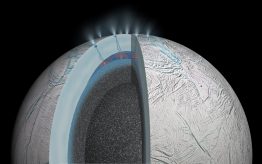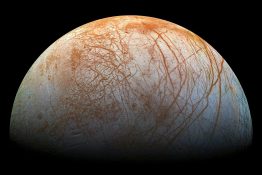The American Geophysical Union announced Sept. 13 that five University of Washington faculty members, including several from the College of the Environment, have been elected as new fellows, representing the departments of astronomy, Earth and space sciences, oceanography, global health and environmental and occupational health sciences. The Fellows program recognizes AGU members who have made exceptional contributions to Earth and space sciences through a breakthrough, discovery or innovation in their field.
Read more at UW News »UW a lead partner on new NSF-funded earthquake research center
The University of Washington is a lead partner on a new multi-institution earthquake research center based at the University of Oregon that the National Science Foundation announced Sept. 8 will receive $15 million over five years to study the Cascadia subduction zone and bolster earthquake preparedness in the Pacific Northwest and beyond. The Cascadia Region Earthquake Science Center, or CRESCENT, will be the first center of its kind in the nation focused on earthquakes at subduction zones, where one tectonic plate slides beneath another.
Read more at UW News »S1 E9: The Big One with Harold Tobin and Audrey Dunham
Earthquakes can strike at any moment. On the final Season 1 episode of FieldSound, UW seismologists Harold Tobin and Audrey Dunham discuss the impending threat of “The Big One” – a large-scale earthquake that will strike along the Cascadia Subduction Zone. Tobin and Dunham also share recent advances in earthquake and tsunami preparedness for communities inland and along the coast in the Pacific Northwest.
Read more »Phosphate, a key building block of life, found on Saturn’s moon Enceladus
An international team including a University of Washington scientist has found that the water on one of Saturn’s moons harbors phosphates, a key building block of life. The team led by the Freie Universität Berlin used data from NASA’s Cassini space mission to detect evidence of phosphates in particles ejected from the ice-covered global ocean of Saturn’s moon Enceladus. Phosphorus, in the form of phosphates, is vital for all life on Earth.
Read more at UW News »Newly discovered form of salty ice could exist on surface of extraterrestrial moons
The red streaks crisscrossing the surface of Europa, one of Jupiter’s moons, are striking. Scientists suspect it is a frozen mixture of water and salts, but its chemical signature is mysterious because it matches no known substance on Earth. An international team led by the University of Washington may have solved the puzzle with the discovery of a new type of solid crystal that forms when water and table salt combine in cold and high-pressure conditions.
Read more at UW News »





